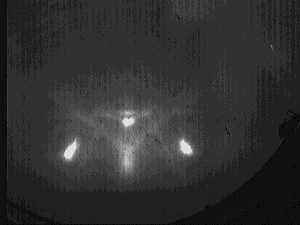
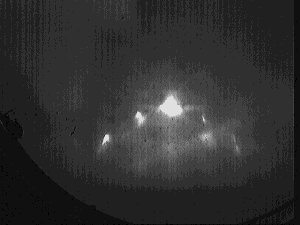
Next the Al source shutter is opened (0.3 ML/s AlAs) at a substrate temperature of still 900°C. The AlN usually starts out to grow rough (3-D) as shown in the figure, but typically within a few minutes the growth becomes more and more 2-D as shown in the next row of images (after 30 min). AlN is grown until no more improvement in surface quality is noticed, which is usually between 10-30 minutes (about 200-500 Å).
Next the Ga source shutter is opened (7 ML/s GaAs) while the AlN shutter is still open, which is closed after about 1 min. This change "on the fly" is done to prevent contamination (especially oxygen) to build up on the AlN surface as well as to provide a somewhat gradual transition from AlN to GaN growth. Then the substrate temperature is ramped slowly to about 20° above the balance point to be in the good part of the hysteresis of the dips, which is explained in the next chapter. This corresponds to a substrate temperature of 820°C for a Ga flux of 6.8 ML/s (GaAs).
Sometimes the GaN starts out growing somewhat 3-D as shown in the figure (after 5 min.), and it usually helps to grow for a few minutes at relatively high substrate temperatures. After a couple of minutes the typical weak 2x2 reconstructed GaN pattern starts to come in as shown. The streaks in the GaN RHEED pattern typically become sharper over time, and sometimes a dramatic sharpening is seen as shown in the figure (here after about 30 minutes). Another set of images is provided showing the pattern 5° off axis.
Figure 22 (below): 112(bar)0 and 11(bar)00 RHEED pattern of GaN on c-plane sapphire with AlN buffer layer
Sapphire c-plane substrate "as is" after outgasing


Sapphire after 30 minutes nitradation
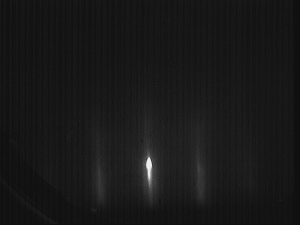
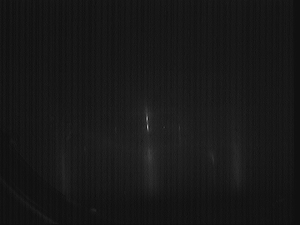
AlN after 1 minute
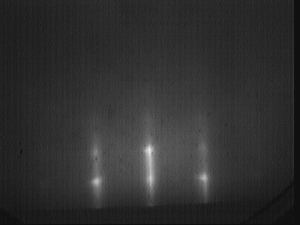

AlN after 30 minutes
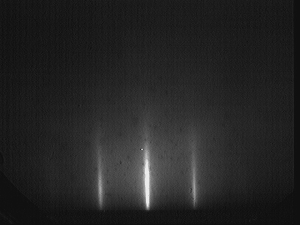
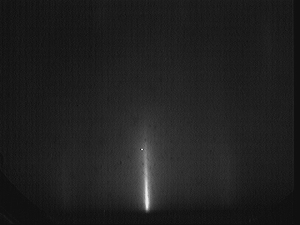
GaN after 5 minutes
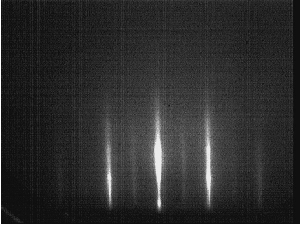

GaN after 30 minutes
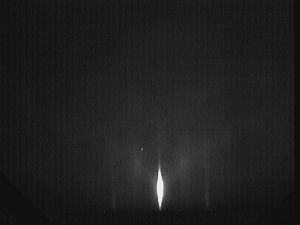
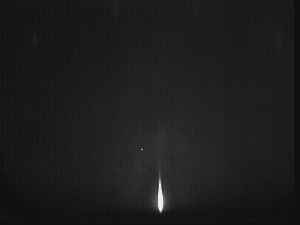
GaN 5° off axis after 30 minutes
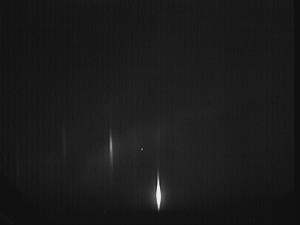
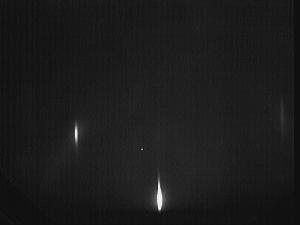
Figure 22: 112(bar)0 and 11(bar)00 RHEED pattern of GaN on c-plane sapphire with AlN buffer layer
Table of Contents